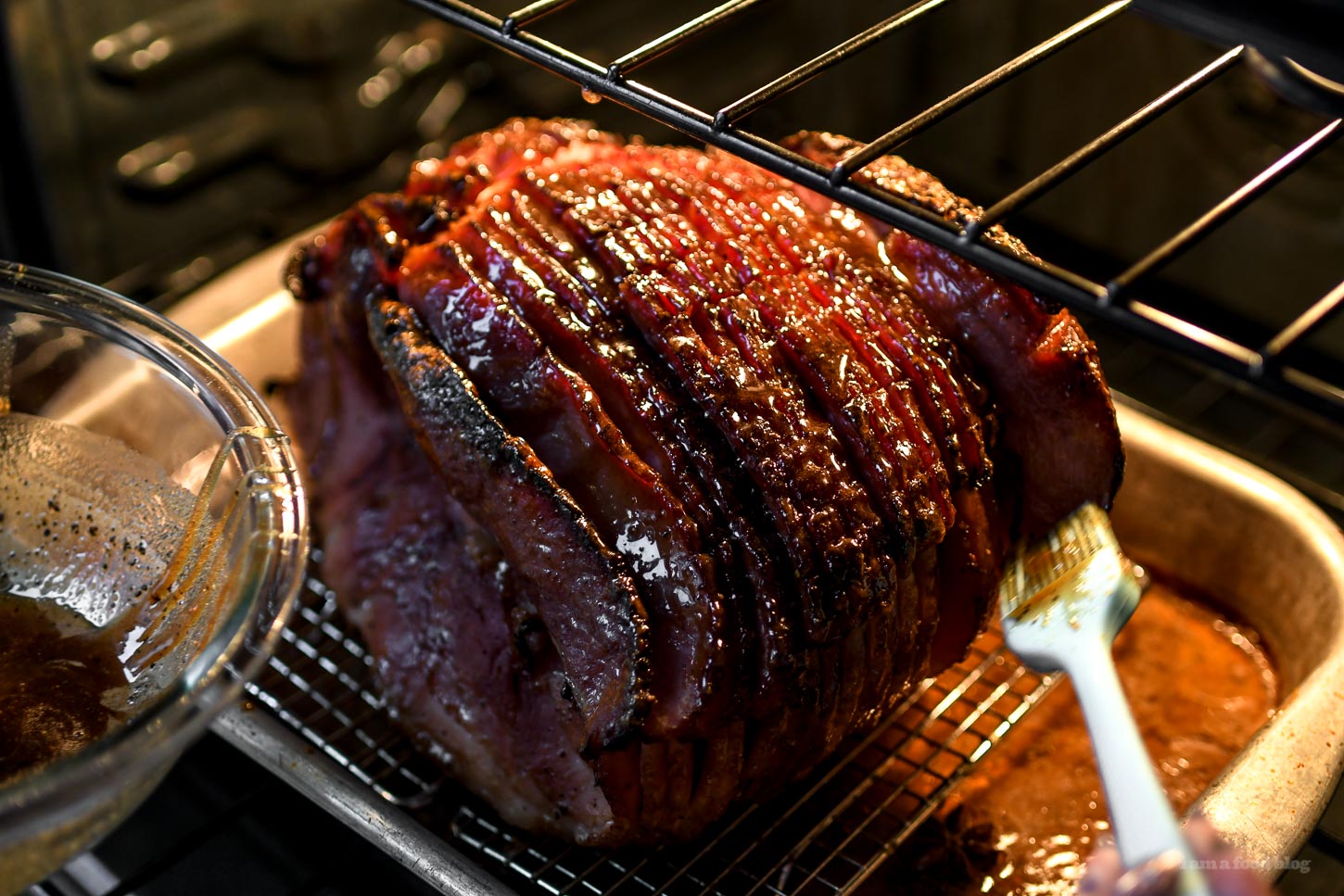


I have already shared some fabulous spiral ham recipes with you, but a beautiful, caramelized spiral ham with pineapple ham glaze has been on my bucket list for quite some time – because sweet and tangy pineapple and salty, smoky ham belong together! And this recipe belongs on your Easter table! When I think of Easter, I think of the reason for the season and family gathered around a feast of food, with spiral ham as the prized centerpiece. And now for the main event – spiral ham with brown sugar pineapple ham glaze! Happy almost Easter! I’ve loved sharing bright Easter recipes with you last week such as lemon poke pound cake, deviled eggs, and berry croissant breakfast casserole – and I have key lime cheesecake and strawberry spinach salad coming for you later this week! But in the meantime, you can check out all of my Easter recipes here. Don't forget to save that ham bone it's perfect for collard greens, pasta fagiolei, or red beans and rice.PIN THIS RECIPE TO SAVE FOR LATER spiral HAM recipe Drizzle with a few glaze-infused pan drippings, and enjoy. Simply slice along the bone and watch those perfect slices fall like autumn leaves or the petals of spring flowers onto your platter or plate. Now that your ham is hot, glazed, and ready to serve, you'd better photograph it, because next you'll need to carve it. Crispy edges can also significantly boost leftover ham's value, adding a pleasant texture even days later. If you like, you can put the ham under the broiler for a couple of minutes at the end in order to get those crispy, caramelized edges with sizzle and shine announcing the presence of a formidable centerpiece. That way the glaze has time to drizzle in between the slices, and help seal in the moisture throughout the warming process. In terms of timing, it's best to apply several applications over the course of reheating. Maple and bourbon are also popular flavorings.
#Baking a spiral sliced ham free#
If you're making your own glaze, feel free to take the flavor profile in just about any direction, although traditionally most glazes are made with a combination of brown sugar, honey, mustard, fruit juice, and spices like clove or cayenne pepper. Everyone loves to advise you to throw the packet away, but we'll leave that decision up to you (to be certain, there's nothing especially wrong with the glaze packet). Many spiral hams will come with a little packet of glaze. In a Crockpot set to low, an 8- to 10-pound ham will warm through in 4 or 5 hours, depending on the ham's initial temperature. You can use a Crockpot instead of an oven to heat your ham, provided, of course, the Crockpot is spacious enough. For a large ham, this can take several hours, so plan accordingly. When it hits 135☏ or so, pull it out, and it will continue cooking to reach the recommended 140☏. Don't worry so much about the time, and just check the ham's internal temperature periodically with the meat thermometer. The X is usually somewhere between 10 and 20, while the Y is generally 250☏ to 300☏. Many ham preparation guides will tell you to heat your ham for X minutes per pound at Y temperature. As long as you use a thermometer and don't set your oven too high, your ham will reach serving temperature without drying out. Some folks like to add liquid or lemon slices to the bottom of the pan, but this isn't necessary. If you don't have foil, you can use a cooking bag, or even a large oven-safe pot with a lid set ajar. Loosely wrap the ham with foil, set it in a roasting pan, and you'll have everything you need to keep your ham nice and moist. Foil is the easiest vapor barrier to apply, and it's foolproof. You don't want to miss Juicytown and end up in Jerkyville.

But being able to measure your target is the best way to avoid overshooting it. The most important tool to help you properly heat a spiral ham isn't an oven-it's a thermometer. You don't want to dry out the surface in the process however, and heating too aggressively will rob the ham of its succulence (to the point where neither a maple syrup glaze nor mustard could improve the situation). Since it's a large piece of meat, warming should go low and slow because it takes time for heat to penetrate all the way to the bone. Your ham is already cooked, so it only needs to be brought to a suitable serving temperature, which is about 140☏.


 0 kommentar(er)
0 kommentar(er)
